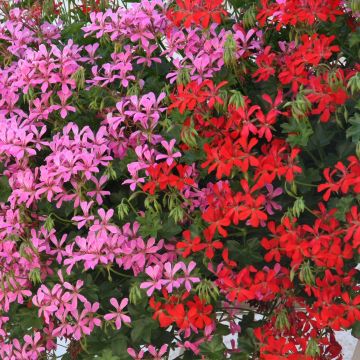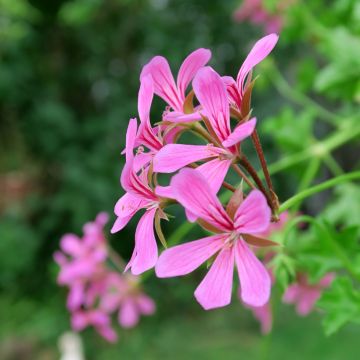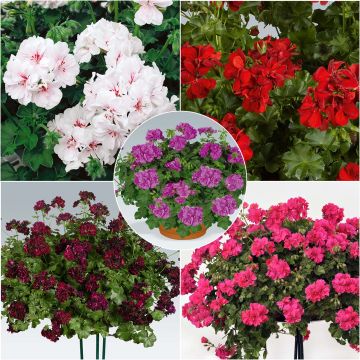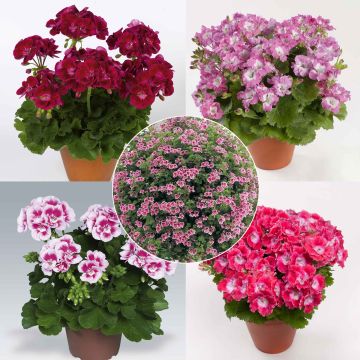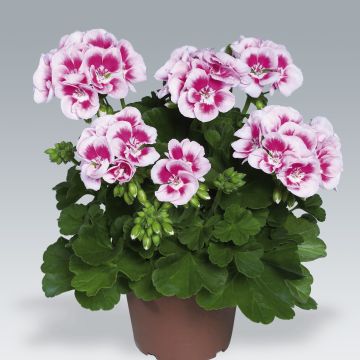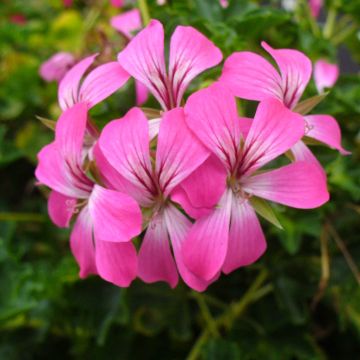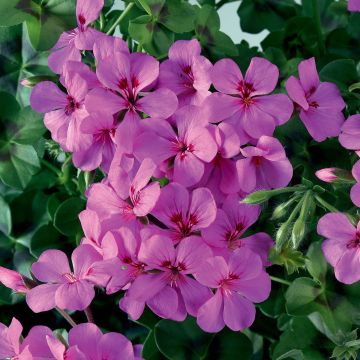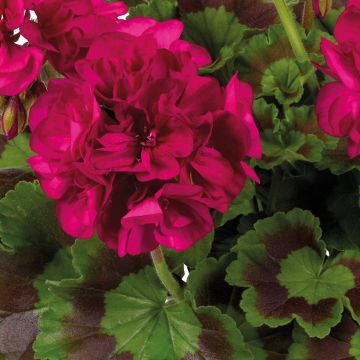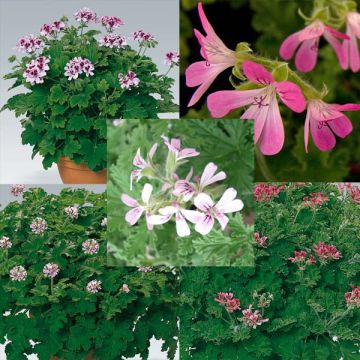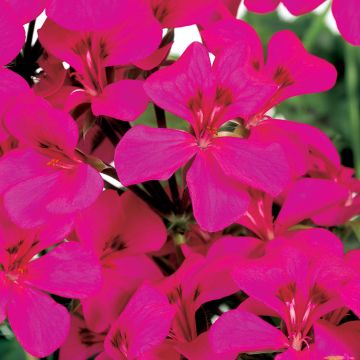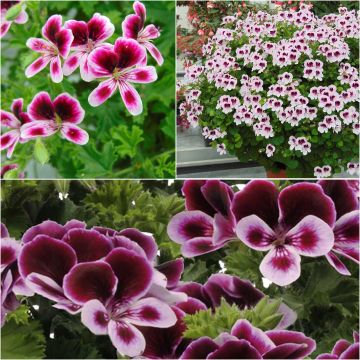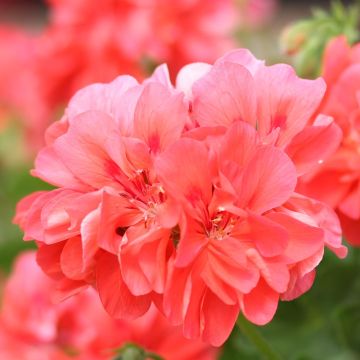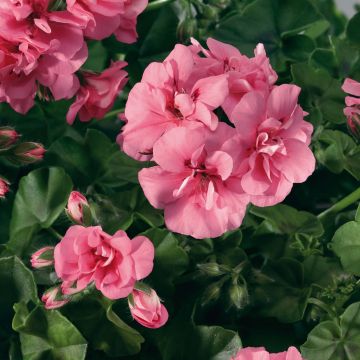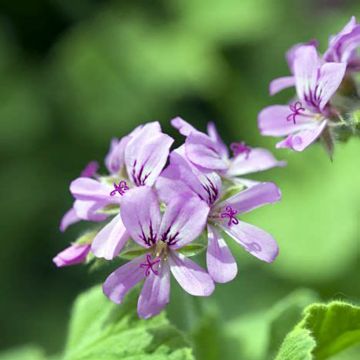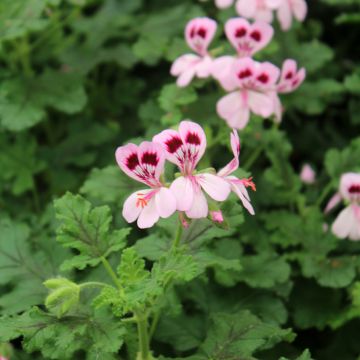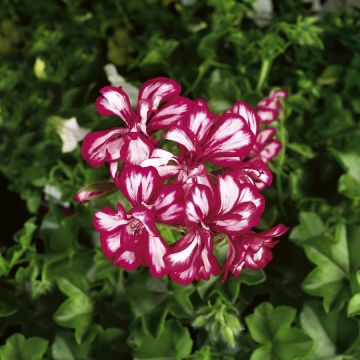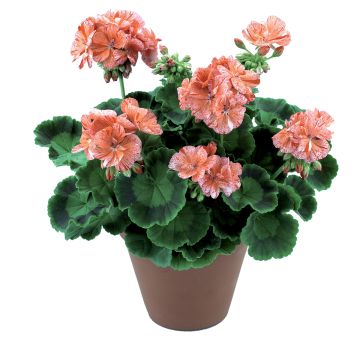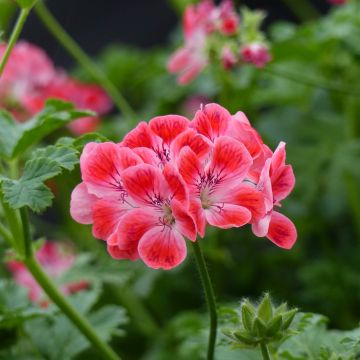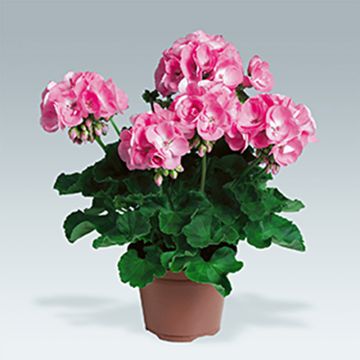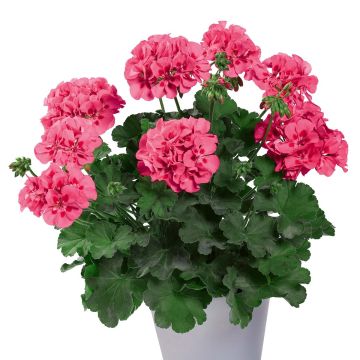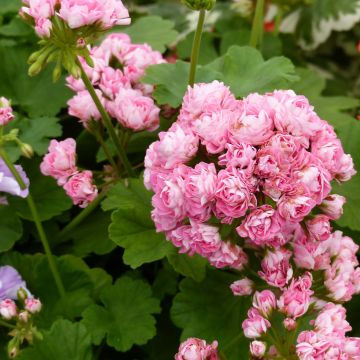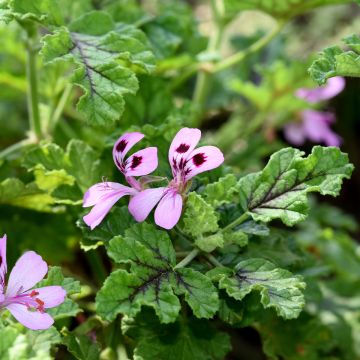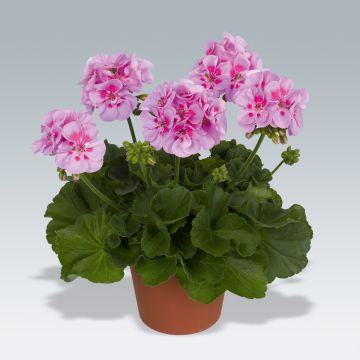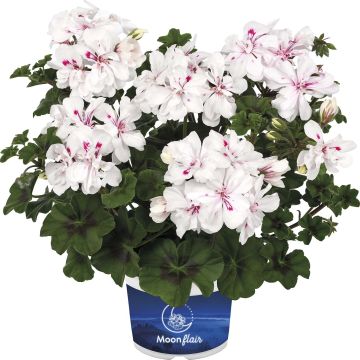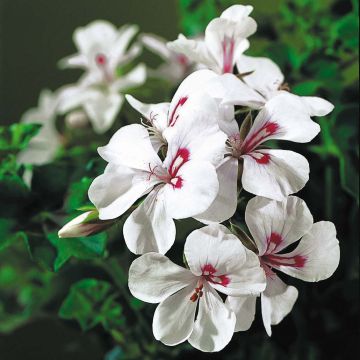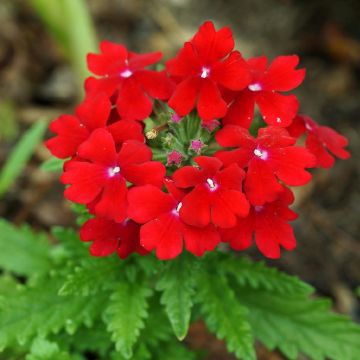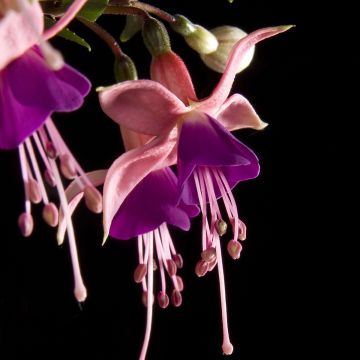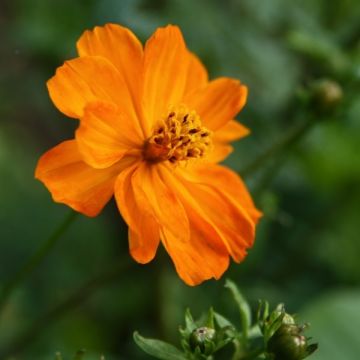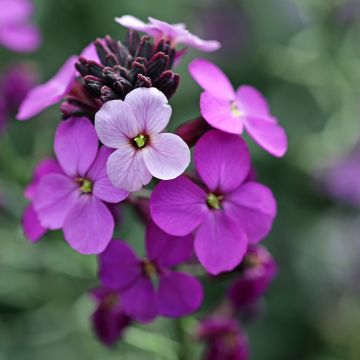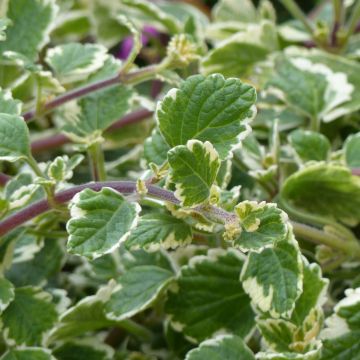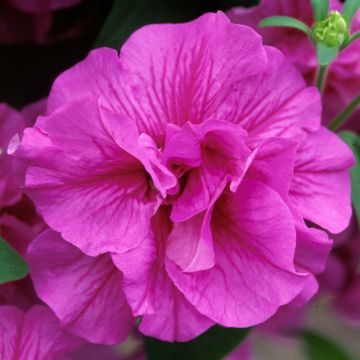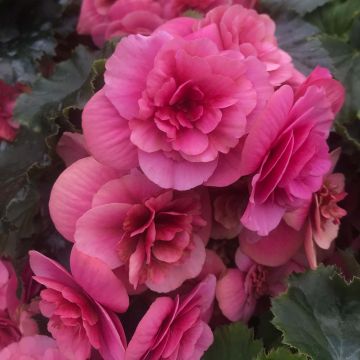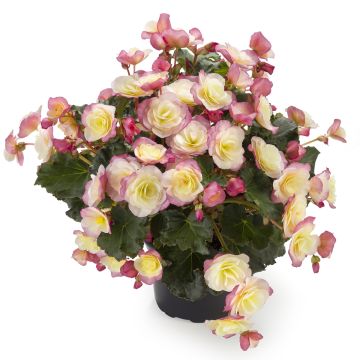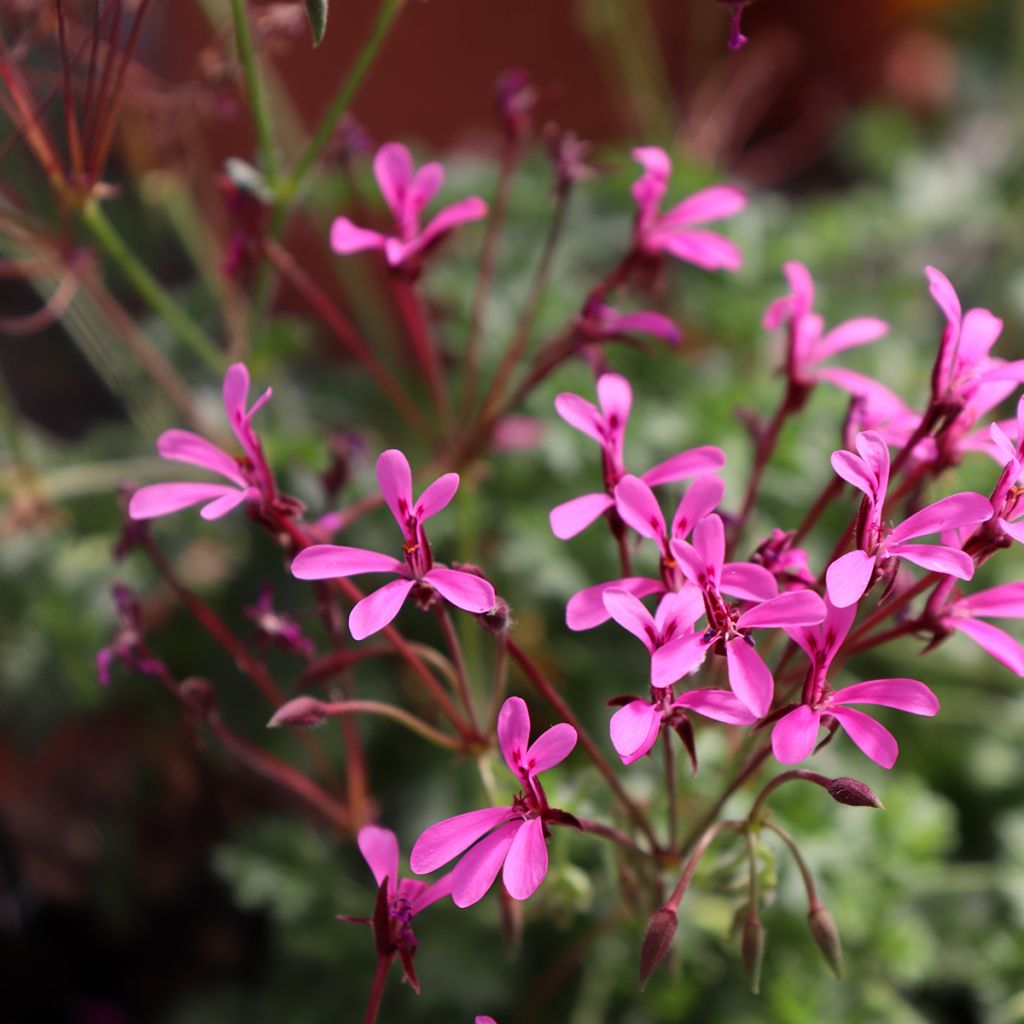

Pelargonium odorant ionidiflorum - Géranium botanique
Pelargonium ionidiflorum
Pelargonium ionidiflorum
Celery-leaved Pelargonium, Celery-scented Pelargonium, Fairy Cascades,
Why not try an alternative variety in stock?
View all →This plant carries a 6 months recovery warranty
More information
We guarantee the quality of our plants for a full growing cycle, and will replace at our expense any plant that fails to recover under normal climatic and planting conditions.
From €5.90 for pickup delivery and €6.90 for home delivery
Express home delivery from €8.90.
Does this plant fit my garden?
Set up your Plantfit profile →
Description
The Pelargonium ionidiflorum is a highly floriferous botanical species, with a spreading habit, affectionately known by some as "Fairy Cascades" due to its propensity to form highly blooming cascades for long weeks. Its flowers are delicate, a rather bright pink, borne in small, airy umbels above beautiful emerald green lobed foliage. When crushed, it releases a slight scent reminiscent of coriander or parsley. It is mainly cultivated for its beauty. Capable of withstanding -6°C (21.2°F), this South African geranium adapts well to coastal areas, including dry climates. Elsewhere, it should be protected from the cold during winter.
The Pelargonium ionidiflorum belongs to the geranium family, like all geraniums and pelargoniums. Its natural distribution area is very limited, located in an inland region of the Eastern Cape, South Africa. This region, known as Karoo, experiences high summer temperatures with rare rainfall and winter temperatures that drop below 0°C (32°F). It is a perennial undershrub that reaches a height of 35-40 cm (14-16in). Its stems root at the nodes when touching the ground, allowing it to spread. Mature stems have a slightly corky bark, while young stems are green and slender. The foliage remains evergreen in winter. It consists of soft, green, lobed leaves, measuring 2.5 to 6 cm (1 to 2in) in length. The leaf blade is covered with white glandular hairs that secrete an aromatic essential oil. Flowering occurs from May-June to October in our climates. It takes the form of umbels borne at the ends of branches. These beautiful small flowers have 5 petals, a fairly vivid purplish pink, with the upper 2 petals having darker pink markings. The Pelargonium ionidiflorum thrives in full sun or light shade, in well-drained soil. This species can live for many years if the growing conditions are satisfactory.
The Pelargonium ionidiflorum is ideal for dry gardens or coastal areas. It can be used in rockeries, borders, as ground cover, to add a beautiful touch of colour. In this setting, it can be paired with oregano, thyme, dwarf mugwort, creeping baby's breath, etc. It also excels in containers, pots, or hanging baskets. Its long flowering period attracts bees, butterflies, and other pollinating insects. Depending on the gardener's preference, this pelargonium can be combined with ivy geraniums in various colours, verbenas, lobelias with extraordinary blues, Million Bells, Madagascar periwinkles, Dichondra Silver Falls, or even diascias, for example.
Report an error about the product description
Pelargonium ionidiflorum in pictures
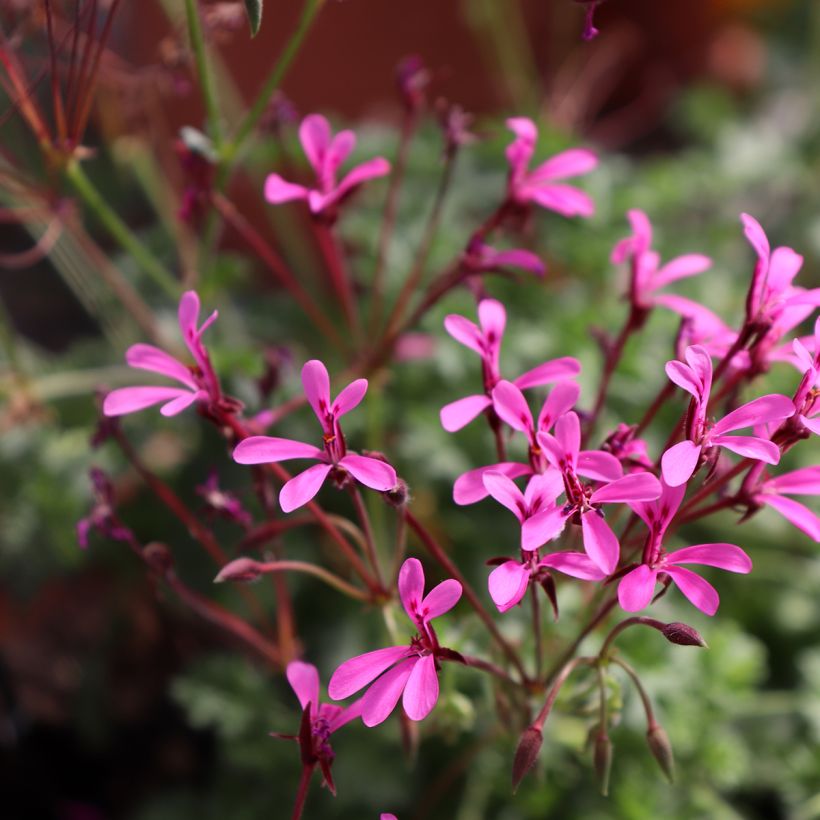

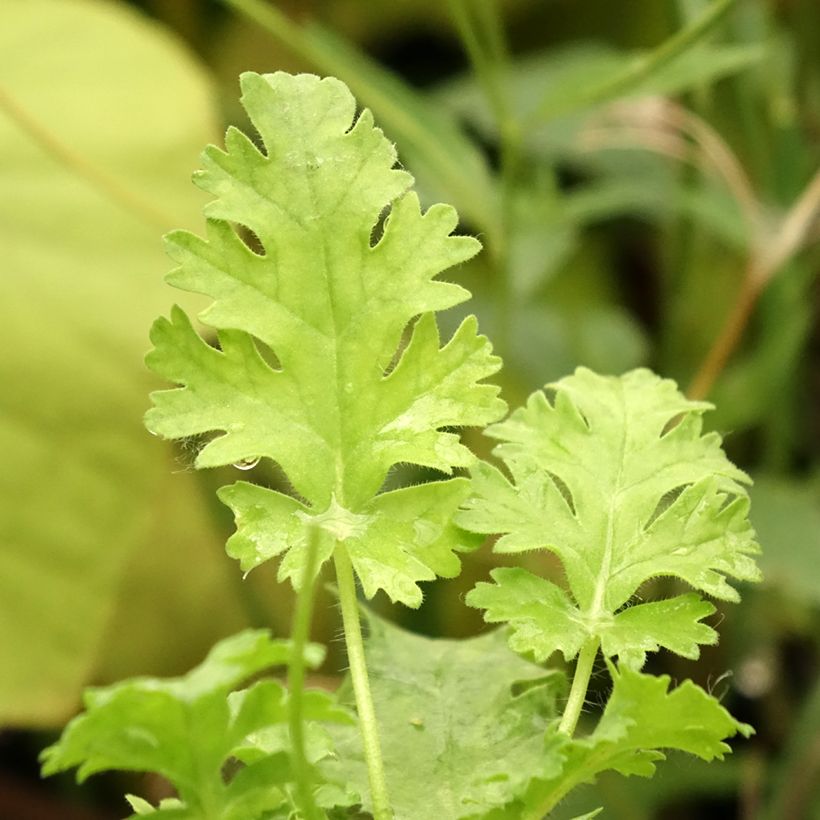

Flowering
Foliage
Plant habit
Botanical data
Pelargonium
ionidiflorum
Geraniaceae
Celery-leaved Pelargonium, Celery-scented Pelargonium, Fairy Cascades,
South Africa
Other Pelargonium - Geranium
Planting and care
Plant your geraniums and pelargoniums in open ground after the last frosts, in a sunny position. You can also plant them in a pot placed in a sheltered location, which you will take out in May. If you plant them in open ground, wait until the frosts have passed. Scented geraniums require well-drained soil, but not necessarily very rich. Water moderately. In a pot, regular watering is necessary in summer, and it should be reduced. You can keep your geraniums by bringing them indoors under a veranda or a cold greenhouse in winter. They can withstand a light frost, but they will not survive the winter in the garden, except by the seaside.
The Pelargonium ionidiflorum can tolerate a brief frost of about -6 °C (21.2°F) and it tolerates water shortage well, both in open ground and once well rooted.
Planting period
Intended location
Care
This item has not been reviewed yet - be the first to leave a review about it.
Plug plants - Annuals
Haven't found what you were looking for?
Hardiness is the lowest winter temperature a plant can endure without suffering serious damage or even dying. However, hardiness is affected by location (a sheltered area, such as a patio), protection (winter cover) and soil type (hardiness is improved by well-drained soil).

Photo Sharing Terms & Conditions
In order to encourage gardeners to interact and share their experiences, Promesse de fleurs offers various media enabling content to be uploaded onto its Site - in particular via the ‘Photo sharing’ module.
The User agrees to refrain from:
- Posting any content that is illegal, prejudicial, insulting, racist, inciteful to hatred, revisionist, contrary to public decency, that infringes on privacy or on the privacy rights of third parties, in particular the publicity rights of persons and goods, intellectual property rights, or the right to privacy.
- Submitting content on behalf of a third party;
- Impersonate the identity of a third party and/or publish any personal information about a third party;
In general, the User undertakes to refrain from any unethical behaviour.
All Content (in particular text, comments, files, images, photos, videos, creative works, etc.), which may be subject to property or intellectual property rights, image or other private rights, shall remain the property of the User, subject to the limited rights granted by the terms of the licence granted by Promesse de fleurs as stated below. Users are at liberty to publish or not to publish such Content on the Site, notably via the ‘Photo Sharing’ facility, and accept that this Content shall be made public and freely accessible, notably on the Internet.
Users further acknowledge, undertake to have ,and guarantee that they hold all necessary rights and permissions to publish such material on the Site, in particular with regard to the legislation in force pertaining to any privacy, property, intellectual property, image, or contractual rights, or rights of any other nature. By publishing such Content on the Site, Users acknowledge accepting full liability as publishers of the Content within the meaning of the law, and grant Promesse de fleurs, free of charge, an inclusive, worldwide licence for the said Content for the entire duration of its publication, including all reproduction, representation, up/downloading, displaying, performing, transmission, and storage rights.
Users also grant permission for their name to be linked to the Content and accept that this link may not always be made available.
By engaging in posting material, Users consent to their Content becoming automatically accessible on the Internet, in particular on other sites and/or blogs and/or web pages of the Promesse de fleurs site, including in particular social pages and the Promesse de fleurs catalogue.
Users may secure the removal of entrusted content free of charge by issuing a simple request via our contact form.
The flowering period indicated on our website applies to countries and regions located in USDA zone 8 (France, the United Kingdom, Ireland, the Netherlands, etc.)
It will vary according to where you live:
- In zones 9 to 10 (Italy, Spain, Greece, etc.), flowering will occur about 2 to 4 weeks earlier.
- In zones 6 to 7 (Germany, Poland, Slovenia, and lower mountainous regions), flowering will be delayed by 2 to 3 weeks.
- In zone 5 (Central Europe, Scandinavia), blooming will be delayed by 3 to 5 weeks.
In temperate climates, pruning of spring-flowering shrubs (forsythia, spireas, etc.) should be done just after flowering.
Pruning of summer-flowering shrubs (Indian Lilac, Perovskia, etc.) can be done in winter or spring.
In cold regions as well as with frost-sensitive plants, avoid pruning too early when severe frosts may still occur.
The planting period indicated on our website applies to countries and regions located in USDA zone 8 (France, United Kingdom, Ireland, Netherlands).
It will vary according to where you live:
- In Mediterranean zones (Marseille, Madrid, Milan, etc.), autumn and winter are the best planting periods.
- In continental zones (Strasbourg, Munich, Vienna, etc.), delay planting by 2 to 3 weeks in spring and bring it forward by 2 to 4 weeks in autumn.
- In mountainous regions (the Alps, Pyrenees, Carpathians, etc.), it is best to plant in late spring (May-June) or late summer (August-September).
The harvesting period indicated on our website applies to countries and regions in USDA zone 8 (France, England, Ireland, the Netherlands).
In colder areas (Scandinavia, Poland, Austria...) fruit and vegetable harvests are likely to be delayed by 3-4 weeks.
In warmer areas (Italy, Spain, Greece, etc.), harvesting will probably take place earlier, depending on weather conditions.
The sowing periods indicated on our website apply to countries and regions within USDA Zone 8 (France, UK, Ireland, Netherlands).
In colder areas (Scandinavia, Poland, Austria...), delay any outdoor sowing by 3-4 weeks, or sow under glass.
In warmer climes (Italy, Spain, Greece, etc.), bring outdoor sowing forward by a few weeks.

































